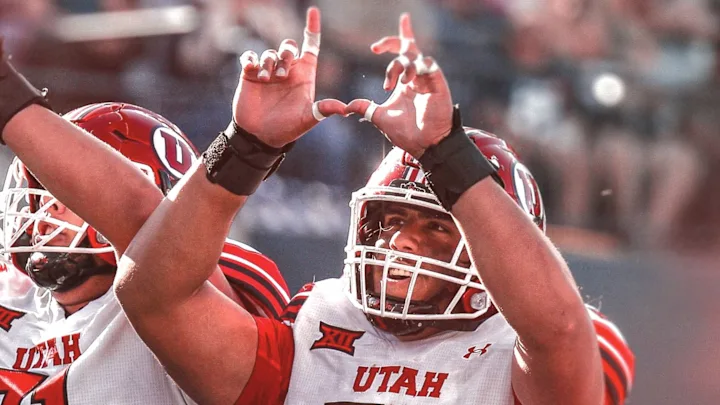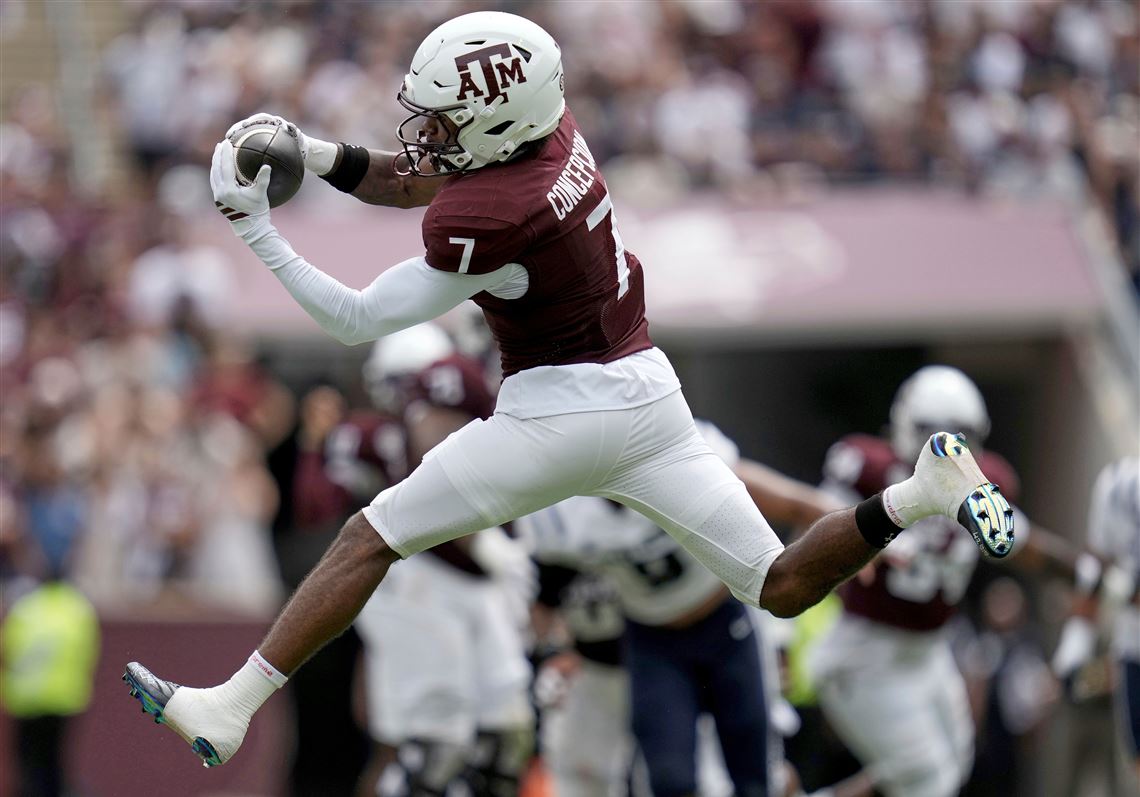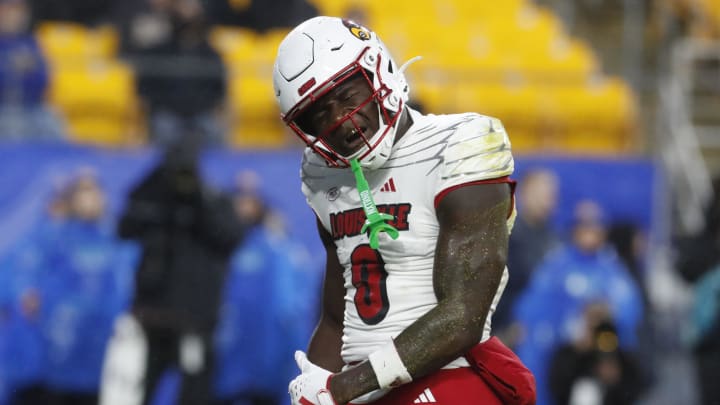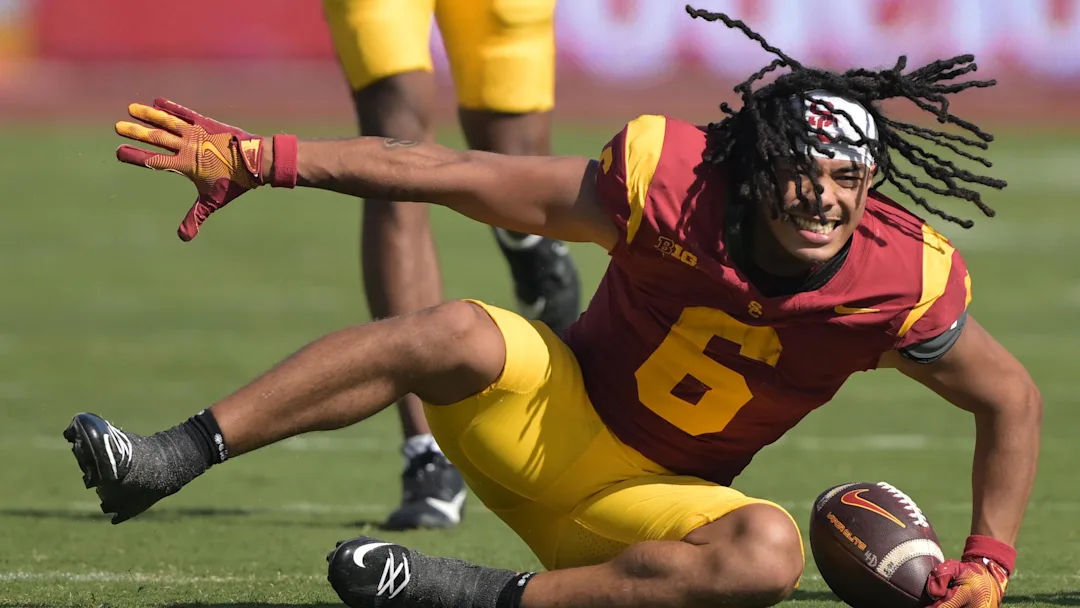By Charlie Campbell.
Send Charlie an e-mail here: [email protected]
Follow Charlie on Twitter @draftcampbell for updates.
This page was last updated April 4, 2019. Follow me @walterfootball for updates.
Wide Receiver Class
Early-round talent: D
Mid-round: B
Late-round: C+
Overall grade: C-
2019 prospects vs 2018
D.J. Moore
Calvin Ridley
Courtland Sutton
D.K. Metcalf
Parris Campbell
Marquise Brown
A.J. Brown
Deebo Samuel
Dante Pettis
Christian Kirk
Riley Ridley
N’Keal Harry
Anthony Miller
James Washington
D.J. Chark
Kelvin Harmon
This year’s class of wide receivers is very underwhelming. It has decent depth for the second day of the draft, as there are a lot of solid wide receivers who are worthy of being picked in the second through fourth round. That is where the value lies in this receiver class, but it lacks top-end talent for the first round.
If you were to merge the two classes together, D.K. Metcalf would be the fourth receiver selected, because he is not as good of a prospect as D.J. Moore, Calvin Ridley or Courtland Sutton. In last year’s draft, Metcalf would have been a second-round pick. Parris Campbell, Marquise Brown, A.J. Brown, and Deebo Samuel are also not as good as Sutton, although they are better than Dante Pettis and Christian Kirk. Riley Ridley and N’Keal Harry are second-round receivers of the same ilk as Anthony Miller and James Washington. Kelvin Harmon would go behind Chark.
Safest Pick: Deebo Samuel, South Carolina

Previous Picks:
2018: Christian Kirk
2017: Corey Davis
2016: Will Fuller
2015: Amari Cooper
2014: Sammy Watkins
2013: DeAndre Hopkins
My track record here is pretty good. Hopkins has turned into one of the best players in the NFL regardless of position and is a phenomenal play-maker. Watkins hasn’t put it all together for a string of big seasons, but he has played well when healthy. Cooper has been inconsistent, but looks like he is still going to have a decent NFL career. Fuller has been excellent when healthy and is underrated across the league. Davis was injured for a lot of his rookie year and flashed some in 2018. Christian Kirk had a solid rookie year despite Arizona struggling in all phases.
This was a tough choice between my top candidates of Parris Campbell, Deebo Samuel and A.J. Brown. I ended up selecting Samuel because he is a pure football player. That was seen at South Carolina, where he was an excellent receiver who also contributed on special teams. He also proved it at the Senior Bowl. Samuel is a fast wide receiver who is dangerous with the ball in his hands. I think he is a safe pick to end up being a quality NFL wideout.
Biggest Bust Potential: N’Keal Harry, Arizona State

Previous Picks:
2018: Auden Tate
2017: Curtis Samuel
2016: Corey Coleman
2015: Devin Funchess
2014: Kelvin Benjamin
2013: Cordarrelle Patterson
My track record here is good. Tate was a seventh-round pick, so if he doesn’t pan out for the Bengals he wouldn’t be a true bust given where they took him. Samuel didn’t do much as a rookie, but he flashed some serious ability as a second-year pro. Other than him, the rest of the group looks like a collection of busts. In 2016, I almost went with Laquon Treadwell instead of choosing Coleman. Both of them have been major disappointments as first-round picks, and Coleman was a huge bust for the Browns. Funchess had a decent season for Carolina, but overall, he has been a disappointment, and the Panthers were not interested in re-signing him when he hit free agency. Benjamin has had a roller coaster career, and he ended up being a disappointment for Carolina and Buffalo. Patterson was a bust for Minnesota.
Of the early-rounders, Harry stands out to me as having bust potential. The 6-foot-2, 228-pounder has good size to him, but I think he is going to struggle to separate from NFL cornerbacks. While he has some height and weight, he is not overwhelmingly big. Harry is not twitchy, explosive or sudden. I think he is similar to Laquan Treadwell coming out of Ole Miss, so I see some dangerous bust potential with Harry.
Wide Receiver Rankings by Attributes
Separation:
NFL prototype: Antonio Brown, Raiders
- Marquise Brown
- Parris Campbell
- Deebo Samuel
- Riley Ridley
- D.K. Metcalf
- A.J. Brown
- N’Keal Harry
- Kelvin Harmon
Recap: A few wide receivers coach told me that the ability to separate from coverage is the first trait they look for in scouting draft prospects. Marquise Brown is the best in this draft class at achieving space from defensive backs. He does it with vertical speed, quick feet, fast route running, and suddenness out of his breaks. Brown’s separation skill is one of his best traits.
Campbell is another speed receiver who can separate from defensive backs based on his pure foot speed. He is tough for defensive backs to run with and is able to generate space running vertically or crossing the field.
Samuel and Ridley are shifty receivers who have short-area quickness with the speed to get downfield. Both of them can challenge defensive backs and make it tough for them to prevent space.
Metcalf can separatie by using his tremendous speed to run vertical routes downfield. Defensive backs have a hard time running with him, and he can flat out fly by them. However, Metcalf needs work as a route-runner and ran limited routes in college, so separating on route-running is a point of improvement for him entering the NFL.
In the NFL, the trio of A.J. Brown, Harry and Harmon won’t be huge separation receivers. Brown is a good route-runner who uses his size and strength to get late separation for his quarterback. While he doesn’t generate a lot of space, Brown can get enough separation on slants and other underneath routes to help move the chains. Harry and Harmon will struggle to separate from NFL cornerbacks. They will have to win on a lot of contested catches when going against man coverage.
Hands:
NFL prototype: DeAndre Hopkins, Texans
- A.J. Brown
- Kelvin Harmon
- Riley Ridley
- N’Keal Harry
- Deebo Samuel
- Marquise Brown
- D.K. Metcalf
- Parris Campbell
Recap: This is a nice crop of sure-handed receivers. A.J. Brown has excellent hands. I like how he attacks the football and doesn’t wait for it to come to him. Harmon has very good hands as well. He is strong to snatch the ball and rip it out of the air. Samuel shows steady hands and is reliable. Ridley has reliable hands and routinely makes some difficult catches look easy. Harry also displays steady hands overall, but occasionally you would see him drop a pass with defenders closing around him.
Marquise Brown is a smaller speed receiver and can drop more passes than big receivers, but he is generally reliable.
The only two receivers with hands I might describe as below average are Metcalf and Campbell. Metcalf drops too may passes for a big receiver. He needs to improve his concentration and the consistency of his hands. Campbell caught the ball well at the combine. Ohio State also hurt him by not giving him consistent targets to let him get in a rhythm. Campbell’s hands are a weakness entering the NFL, but that is something he definitely can improve upon.
Deep Speed:
NFL prototype: Odell Beckham Jr., Browns
- Marquise Brown
- Parris Campbell
- D.K. Metcalf
- Deebo Samuel
- Riley Ridley
- N’Keal Harry
- A.J. Brown
- Kelvin Harmon
Recap: There a number of wide receivers in this group who have the ability to stretch the field vertically. Marquise Brown and Campbell are legit deep-threat receivers with dangerous speed. Metcalf is very fast at running verticals, and the big and explosive receiver is a threat to burn double coverage over the top. Samuel has the speed to beat teams over the top and is a threat to score on any reception. Defenses have to account for him in the deep part of the field.
Ridley is a not a deep speed receiver who burns defenses with pure explosion, but he does make some plays downfield. He has quickness and is adept at making acrobatic catches downfield along the sideline with defenders close by him.
Harry is not a fast vertical threat for running go routes along the sideline, but he can go up and make receptions over defensive backs even when the defenders have good coverage.
A.J. Brown and Harmon aren’t vertical threats to take a top off a defense. They are more of possession receivers in the NFL.
Route-Running:
NFL prototype: A.J. Green, Bengals
- Deebo Samuel
- Riley Ridley
- Marquise Brown
- Parris Campbell
- A.J. Brown
- Kelvin Harmon
- N’Keal Harry
- D.K. Metcalf
Recap: Route-running is a critical part of gaining separation in the NFL. Wide receivers who get sloppy in their routes have a hard time getting open. Extra steps allow defensive backs to maintain coverage or more time to recover. All eight wideouts in this group are quality route-runners.
Samuel is a very good route-runner. He is sudden in and out of his breaks with quickness, and his route-running often produces separation from cornerbacks. Ridley is excellent as well. He doesn’t take extra steps and is very precise. Ridley is a smooth receiver who enters the NFL with very advanced route-running skills.
Marquise Brown and Campbell are very plus route-runners. Brown is a smooth route-runner who is good at running the slants, crosses, outs and dig routes. Campbell’s speed allows him to quickly get open in the short to intermediate part of the field. He does a nice job of running crossing routes with suddenness out of his breaks.
While A.J. Brown and Harmon aren’t fast wideouts, they are quality route-runners who use their size and suddenness to present a good target on short to intermediate routes.
Harry is a solid route-runner who could use more refinement for the NFL. Metcalf needs work as a route-runner. He did not run the route tree in college, so he has a good amount to learn. Team sources have concerns about Metcalf’s route-running.
Yards After the Catch:
NFL prototype: Julio Jones, Falcons
- Marquise Brown
- Deebo Samuel
- Parris Campbell
- A.J. Brown
- D.K. Metcalf
- Kelvin Harmon
- N’Keal Harry
- Riley Ridley
Recap: The ability to turn a short reception into a big gain can make a wide receiver elite. Among the eight receivers above, all of them have some run-after-the-catch ability, and I wouldn’t say there is one who is really bad.
That being said, the top three are pretty special. Marquise Brown is very shifty in the open field. With his run-after-the-catch skills and speed, Brown is a threat to score any time he touches the ball. Campbell and Samuel can be electric in the open field. They have the speed and explosion to run by defenders while also having serious elusiveness with quick feet to dodge tacklers. They each have some strength to their frame to break some tackles and finish plays well.
A.J. Brown also is a physical runner who will run through tackles from defensive backs and is tough to get on the ground. After the catch, Metcalf is a dangerous receiver. He has the speed to run away from defenders and the size to run through them.
Harmon and Harry are very capable of picking up yards after making a catch. They fight off tacklers and continue to work downfield to get yards. Ridley is a crafty receiver who gets some yards after the catch, but he is not overly fast or physical to be a standout as a run-after-the-catch receiver.
Red Zone:
NFL prototype: DeAndre Hopkins, Texans
- D.K. Metcalf
- A.J. Brown
- Marquise Brown
- Parris Campbell
- Deebo Samuel
- Riley Ridley
- N’Keal Harry
- Kelvin Harmon
Recap: This was a tough category to rank because so many of the receivers were excellent point producers in college. Oddly enough, Metcalf projects as the best red-zone weapon for the NFL even though he had the smallest total of touchdowns last year – due to injury. Given his size and strength combination, plus speed to get open, Metcalf could be a tremendous red-zone weapon to win fade passes and make catches over defenders.
A.J. Brown had 17 touchdowns over the past two seasons, tying him with Marquise Brown for the most over that span. A.J. Brown uses his size and strength to work through defenders while presenting a good target. He has a nose for the end zone. Marquise Brown uses his explosive speed to get open on short routes, and his ability to get quick separation makes him a red-zone weapon.
Samuel and Campbell are similar to Marquise Brown with the speed to get open quickly. Both Samuel and Campbell also can work as ball-carriers, and they showed their point producing skills with 11 and 12 touchdowns respectively last year.
Ridley showed more red-zone potential last fall, haulin in nine touchdowns. His quickness and route-running help him to get open, but he is superb at leaping to make acrobatic catches with outstanding body control. Ridley could be a point producer in the NFL.
Harry is dangerous to win 50-50 passes, so he should be a good red-zone weapon in the NFL. He will jump and high point the ball to make catches over defenders and has the ability to be an asset on fade passes.
Harmon could be a red-zone contributor because his strength and physicality could allow him to outfight defenders for position while beating them for receptions.
NFL Picks - Dec. 28
2026 NFL Mock Draft - Dec. 24
NFL Power Rankings - Dec. 23
Fantasy Football Rankings - Sept. 1




